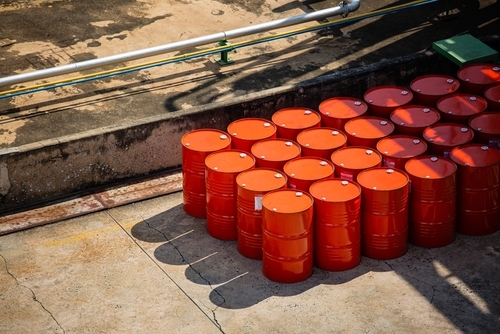[Reuters Analysis]Saudi plays short and long game with OPEC+ production gamble: Bousso


- OPEC+ to increase output target by 2.5 million bpd between April and September
- Saudi has large spare production while others produce at capacity
- Riyadh's share of global oil production declined to 11% in 2024 from 13%
By Ron Bousso
LONDON, July 8 - Saudi Arabia's drive to rapidly increase OPEC+ oil output may put Riyadh in the pole position to regain market share today while also solidifying its dominance over the long term.
A group of eight major oil producers - Saudi Arabia, Russia, the United Arab Emirates, Kuwait, Oman, Iraq, Kazakhstan and Algeria - decided on Saturday to increase joint production by 548,000 barrels per day in August, speeding up the unwinding of a tranche of cuts totalling 2.17 million bpd that started in April.
The combination of this accelerated schedule and an agreed 300,000 bpd increase in the UAE's base production level mean that by the end of September OPEC+ will likely boost its output target by 2.5 million bpd this year.
Yet the new quotas will not actually lead to a dramatic change in the group’s aggregate output, as most members are already producing at or above those levels.
None more so than Kazakhstan, whose lack of compliance with OPEC+ production targets has irked Saudi Arabia for months. The Central Asian country produced 1.88 million bpd in June, matching March's all-time high, far in excess of its August production target of 1.53 million bpd.
In total, the eight OPEC+ members produced an aggregate 32 million bpd in June compared with a quota of 31.38 million bpd, according to Reuters estimates. So it is clear that unwinding the production cuts is largely about catching up with the reality on the ground.
But by making this move now, Saudi Arabia, the de-facto leader of OPEC+ and the world's top oil exporter, is well-positioned to both reestablish discipline in the group and increase its market share.
SPARE CAPACITY
Saudi’s share of global oil production has declined from an average of 13% over the past three decades to 11% in 2024, according to the Energy Institute’s Statistical Review of World Energy.
Similarly, the country’s crude exports accounted for only 15% of global seaborne exports in 2024 from an average of 18% in the previous decade, according to analytics firm Kpler.
Riyadh will want to reverse this trend and solidify its dominant global position since oil and gas revenues contributed 22.3% of the country’s gross domestic product in 2024, according to International Monetary Fund figures.
To its advantage, Saudi Arabia has a lot of untapped oil production capacity.
The country produced around 9.55 million bpd in June, according to Keshav Lohiya, founder of consultancy Oilytics, based on Petro-Logistics data. This leaves it with an extra 200,000 bpd of production increases available through August under the OPEC+ deal.
It also has a production buffer of nearly 3 million bpd it can tap within 90 days, according to International Energy Agency estimates.
In short, with the exception of the UAE, Saudi Arabia is the only OPEC+ producer with room to substantially increase production in the coming quarters.
PRICE WAR
Additional production boosts will obviously put further downward pressure on benchmark crude prices, which have fallen some 15% this year to under $70 a barrel, largely due to OPEC’s initial unwinding of supply cuts along with demand concerns related to U.S. President Donald Trump’s trade war.
But falling prices could work in Saudi Arabia’s favour because both OPEC+ and non-OPEC+ producers are apt to reduce spending in the face of low prices, meaning Riyadh – with its ample spare capacity and low production costs – will be better positioned than its rivals to meet new demand in the coming years.
The recent price decline has already had a noticeable impact on U.S. shale oil producers. The Energy Information Administration forecasts U.S. production to decline from an all-time high of 13.5 million bpd in the second quarter of this year to around 13.3 million bpd in the fourth quarter of 2026, the first drop since the surge in production at the end of the last decade.
Given these dynamics, Riyadh could potentially seek to further accelerate OPEC+ cuts in the coming months to put even more pressure on its rivals while increasing its own output.
LONG GAME
But, ultimately, the Saudis are making a long-term bet.
While nimble U.S. shale producers may have responded immediately to Riyadh’s gambit, the impact on the rest of the industry will take far more time to play out.
Slowing investment in new capacity such as offshore fields will take years to translate into lower output.
Indeed, global supplies are set to rise by 1.6 million bpd to an average of 104.6 million bpd in 2025 and an additional 970,000 bpd next year, outstripping the expected increase in demand over that period, according to IEA forecasts. And most of the supply growth is expected to be driven by non-OPEC+ producers such as the United States, Brazil, Argentina, Guyana and Canada, according to the IEA.
But these forecasts are precisely why the Saudis needed to move to maintain their market dominance over the long term.
And given the current market dynamics – with oil producers reluctant to spend heavily on new production due to weak prices and uncertainty over global demand in the energy transition – Riyadh could well find that its gamble has paid off.
Enjoying this column? Check out Reuters Open Interest (ROI),your essential new source for global financial commentary. ROI delivers thought-provoking, data-driven analysis. Markets are moving faster than ever. ROI can help you keep up. Follow ROI on LinkedIn and X.

OPEC+ oil production cuts

Global seaborne crude oil exports

OPEC spare oil production capacity







